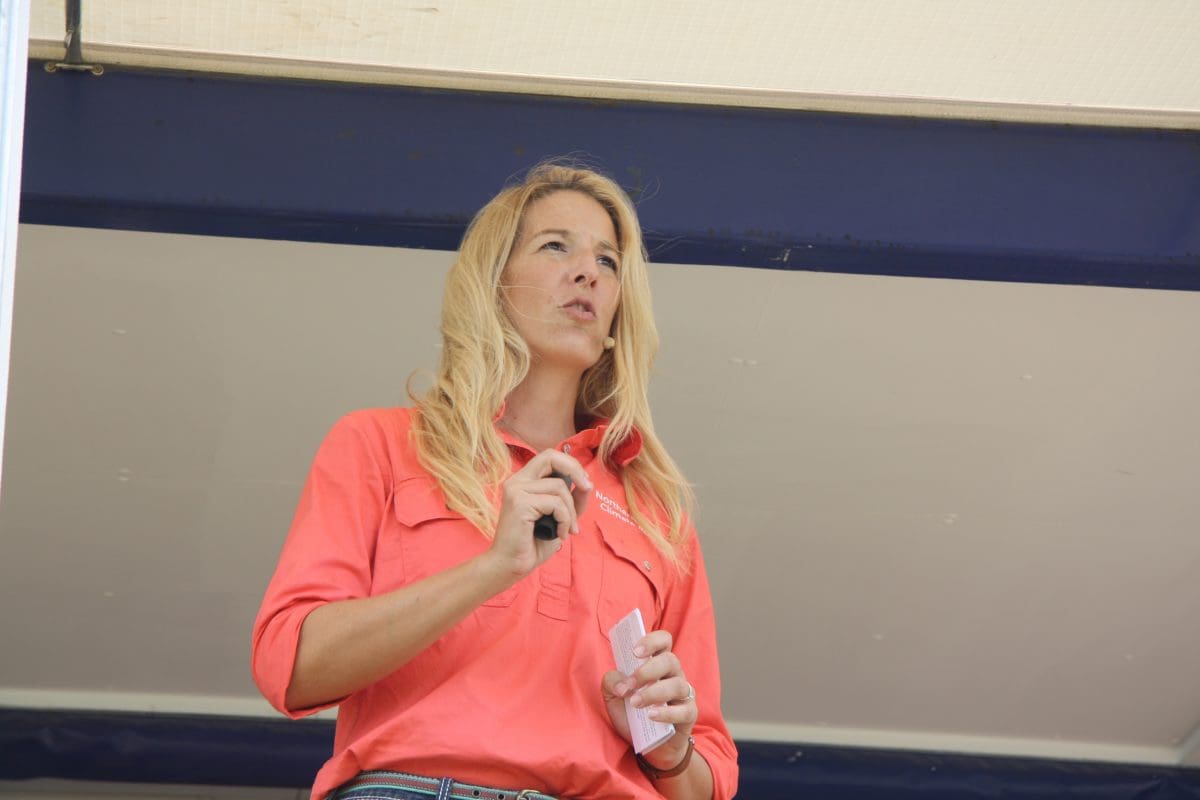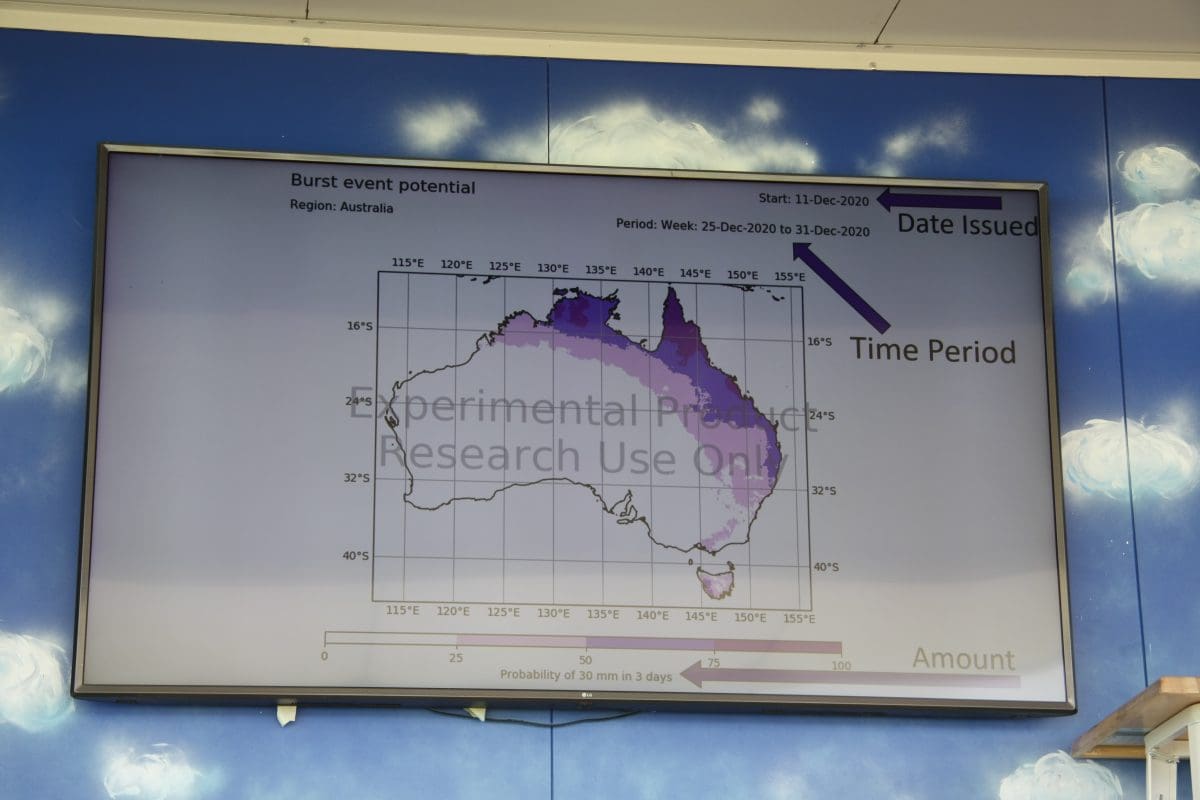
USQ researcher Dr Chelsea Jarvis is working on the Northern Australia Climate Program, and speaks at Beef 2021 about its Burst forecaster for meaningful rainfall.
A CLIMATE tool capable of forecasting ‘meaningful’ rain events up to three weeks out is on track to be rolled out on the Bureau of Meteorology’s website next year.
Known as Burst, visitors to the Ken Coombe Tech Yard Talks at Beef 2021 learnt about it from University of Southern Queensland (USQ) Centre for Applied Climate Sciences researcher Dr Chelsea Jarvis.
Burst is being developed through the Northern Australia Climate Project (NACP), a partnership between the Queensland Government, Meat and Livestock Australia and USQ.
Dr Jarvis told the crowd it was “still in the prototype phase”, and seeking feedback from potential users.
“It will be available on the BoM website,” Dr Jarvis said.
“Hopefully we’ll get it live in the next 12 months.”
Call from producers
Dr Jarvis said discussions with producers to formulate directions for NACP highlighted the need for improved prediction of significant rainfall events to help guide better decisions.
“On properties, these can have very big impacts in relation to animal welfare, pasture conditions and stress levels.
“As producers, we’re mainly interested in meaningful rainfall – enough rain to grow a crop or grow pasture.
“What producers wanted was a forecast for meaningful rainfall.
“Risk can be reduced by using a product for meaningful rainfall.
“We don’t have a crystal ball, but it has been shown to be useful up to three weeks in advance.”

NACP’s Burst forecaster is at prototype stage prior to roll-out which is expected next year.
Dr Jarvis said the definition of meaningful rainfall varied depending on location and soil type, with heavier country requiring more rain to constitute a useful rain event.
Burst is expected to show users the likelihood of rainfall events totalling 20 millimetres, 30mm, 50mm and 70mm over three consecutive days.
“We all know if it’s too spread out, it’s not going to have the same impact.”
Probability problematic
Dr Jarvis delivered her talk from the RaboTruck stage to a group of mostly producers, many of whom had missed out on the La Nina event climate models last year were confidently predicting.
She said the statistical meaning of percentages which indicated the chance of some rain as opposed to useful rain through BoM and other platforms was part of the problem producers faced.
As BoM and others explains on their sites, Dr Jarvis said a 60-per-cent chance of 10-20mm of rain referred to a 60pc chance of getting at least 0.2mm, a 50pc of 10mm and a 25pc chance of 20mm.
However, she said these probabilities were “frequently misinterpreted.”
Dr Jarvis said she hoped Burst could provide some clarity to producers, who have to sometimes make grazing or cropping decisions on conflicting indicators.
“Historical and forecast data can send different signals.
In the historical context, Dr Jarvis said annual registrations in parts of central Queensland have been decreasing since 1910.
“We haven’t included that rainfall change signal into our forecasts.
She said weather events like La Niña can also vary greatly, with the 2010 event being a sodden one, and 2020-21 delivering less rain than expected in many parts of Queensland.
“Every forecast went the other way.”
Producers and industry participants wishing to have input into the final stages of Burst can contact Dr Jarvis at [email protected]
Grain Central: Get our free cropping news straight to your inbox – Click here



HAVE YOUR SAY